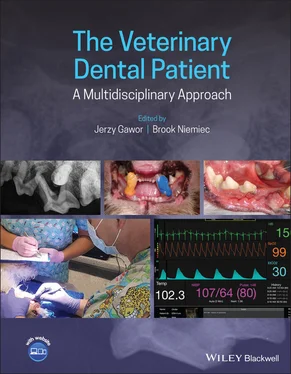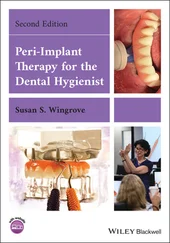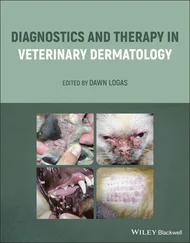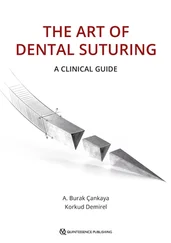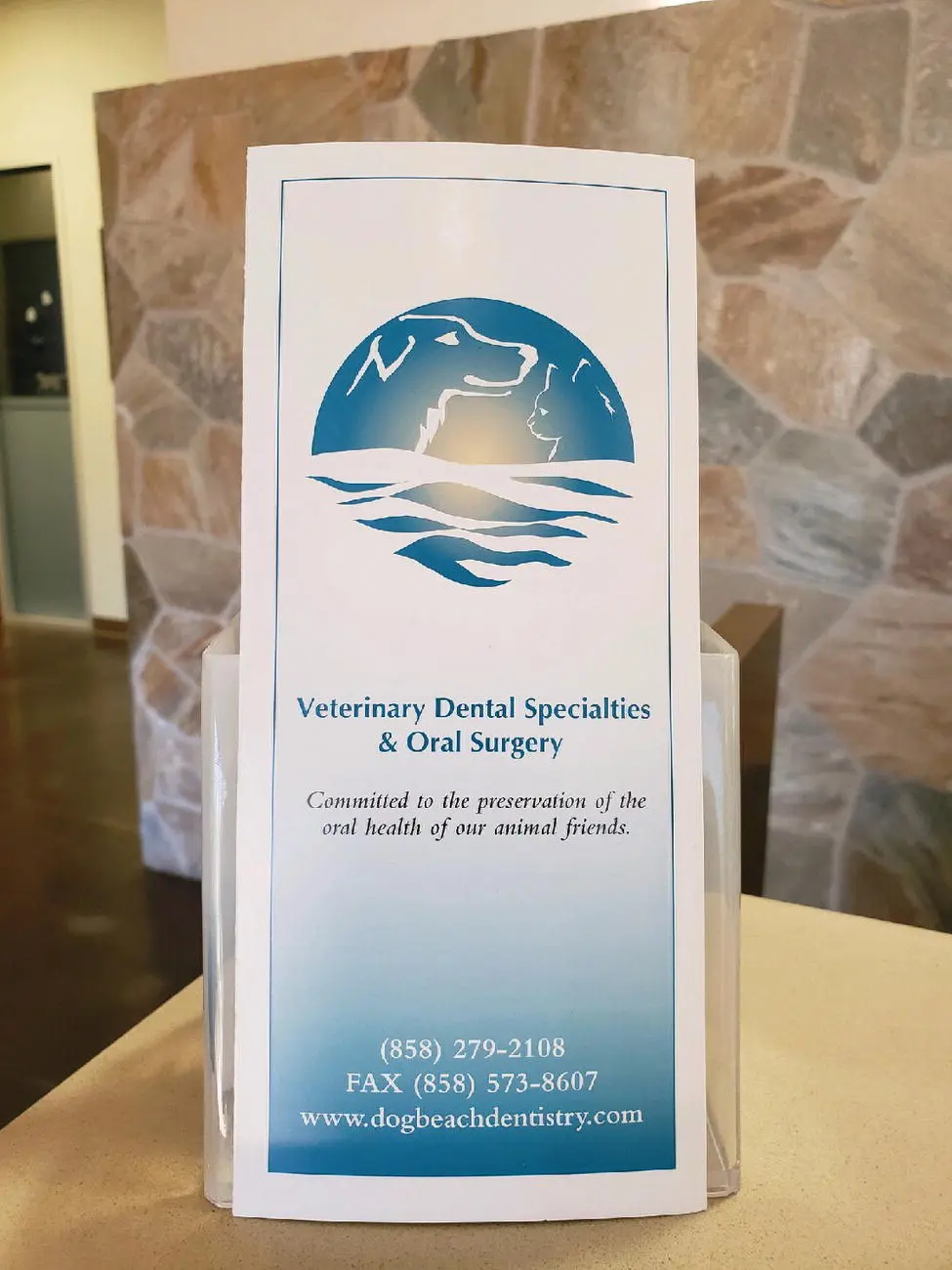
Figure 4.13 Informational brochures in a waiting room.
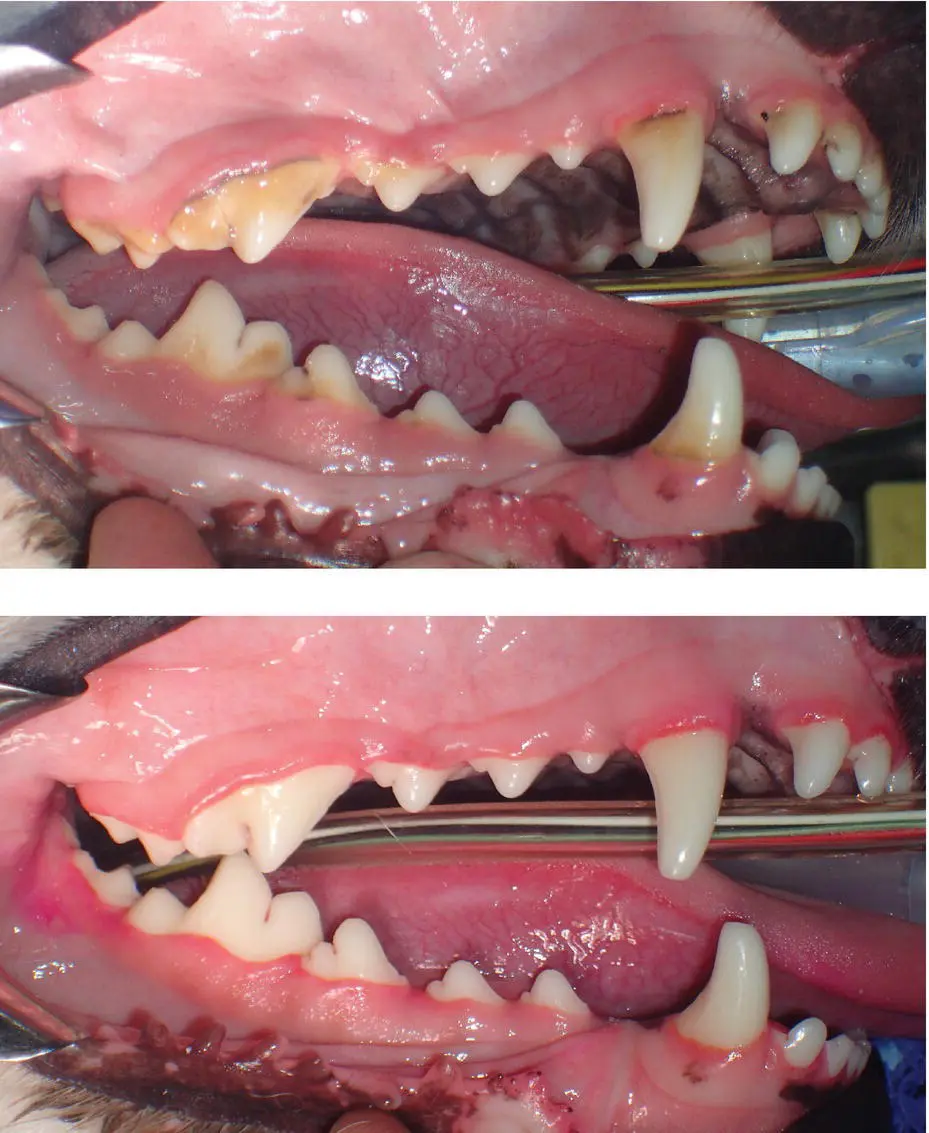
Figure 4.14 Before and after smile book examples.
The veterinarian is the team leader. It is very important that they have a strong belief in the importance of dentistry. They should set proficiency goals, schedule dental training meetings, work with their team to develop a highly trained and efficient working group, and understand the importance of providing the best‐quality care possible. Veterinarians are the only team members who can diagnose disease. They should evaluate the data provided by the veterinary technician/nurse, follow up in areas of concern, and combine the information they obtain with the dental X‐rays to determine a diagnosis and treatment plan. The veterinarian should perform all dental treatments and surgical procedures, including dental extractions. They should be comfortable with the procedures they perform and know the limitations of their training: if a treatment is outside its scope, they should readily refer the patient to a veterinary dental specialist.
The pet owner or client plays a large role in the veterinary practice. As a customer, they make the decisions on who will care for their beloved pet. They should feel comfortable and work closely with the veterinary team to determine the best options for their oral health. They are the home care provider for oral care and must have buy‐in to the best home care options available. Not all options work for everyone, so the team must work to determine the best one for them.
The success of the dental aspect of a veterinary practice is dependent upon all members of the team working together toward one common goal. Each role is vital. With a well‐educated and well‐trained team, there is no limit to the success a practice can achieve. Clients may be influenced by many factors, but often they will stay with a practice where they receive stellar service and care.
1 Bellows, J. (1999). The Practice of Veterinary Dentistry: A Team Effort. Ames, IA: Iowa State Press.
2 Bellows, J. (2004). Periodontal equipment, materials, and techniques. In: Small Animal Dental Equipment, Materials, and Techniques, a Primer (ed. J. Bellows), 115–173. Hoboken, NJ: Wiley‐Blackwell.
3 Holmstrom, S.E., Frost, P., and Eisner, E.R. (1998). Dental prophylaxis. In: Veterinary Dental Techniques, 2e (eds. S.E. Holmstrom, P. Frost and E.R. Eisner), 133–166. Philadelphia, PA: W.B. Saunders.
4 Holmstrom SE. (2013) Veterinary Dentistry A Team approach. 2nd Ed. Elsevier St Louis
5 Lobprise, H.B. and Wiggs, R.B. (2000). The Veterinarian's Companion for Common Dental Procedures. Lakewood, CO: AAHA Press.
6 Niemiec, B.A. (2010). A Color Handbook Small Animal Dental, Oral & Maxillofacial Disease. London: Manson.
7 Perrone, J. (2012). Small Animal Dental Procedures for Veterinary Technicians and Nurses. Hoboken, NJ: Wiley‐Blackwell.
8 Westfelt, E., Rylander, H., Dahlen, G. et al. (1998). The effect of supragingival plaque control on the progression of advanced periodontal disease. J. Clin. Periodontol. 25 (7): 536–541.
5 Prophylactic Program for Oral Health
Brook Niemiec
Veterinary Dental Specialties and Oral Surgery, San Diego, CA, USA
Periodontal disease is the most common disease process in small‐animal patients. Proper therapy for periodontal disease consists of four components, based on the level of disease (Niemiec 2008):
Professional dental cleaning
Periodontal surgery
Extractions
Home care
These various procedures are covered in detail in other chapters; this chapter will focus on the client's role in controlling periodontal (gum) disease.
The prophylactic oral health program includes two major parts: regular dental examinations and established regular oral home care.
5.2 Regular Dental Examinations (and cleanings)
The protocol of regular dental examinations should take approximately 10 minutes and consists of three parts: 3 minutes of history taking and the client completing a questionnaire, 3 minutes of dental/periodontal examination of the conscious patient, and 3 minutes of presentation of diagnosis to the client, instruction on home oral hygiene methods, and recommendation of professional treatment. Parameters are recorded and scored utilizing standardized charts, and should include:
Age of the patient
Type of diet fed (dry, mixed [dry and soft], or soft food; home‐made foods are classified as soft)
Extent of home oral hygiene (active or passive):Regular home careIrregular home careA complete lack of home care
The basic oral clinical exam should include an assessment of the size of the mandibular lymph nodes on palpation, the presence and amount of dental deposits, and the presence and degree of periodontal disease.
The size of the mandibular lymph nodes is classified as:
Normal
Slightly enlarged
Moderately to severely enlarged
The presence of dental deposits is determined visually on the most severely affected tooth and is recorded as:
Absent
Up to 50% of the crown affected
More than 50% of the crown affected
The presence of periodontal disease features is also determined visually on the most severely affected tooth. Gingivitis is recorded when there is inflammation of gingival tissue, which is determined as abnormal redness, swelling, or bleeding of the gums. Periodontitis is recorded when a tooth has gingival recession or is mobile on digital palpation (Gawor et al. 2006).
Scores are presented in Table 5.1.
The summation of scores obtained for the preceding three parameters plus the patient's diet and their level of home care provides the oral health index (OHI), where 0 points indicates optimal oral health and 10 points indicates the worst possible oral health (Gawor et al. 2006). Patients scoring 0–2 receive prophylactic advice. For patients scoring 3–6, significant improvements to the home prophylactic program are required, and a professional dental cleaning may be recommended. Patients scoring 7–10 require immediate exam and treatment under general anesthesia.
This simplified method of oral assessment is useful for public campaigns such as the “Pet Smile” campaign and “National Pet Dental Health Month,” and for inclusion in leaflets and brochures offering free dental exams. It can be easily performed by first‐contact veterinarians, students, and nurses after brief training. Smartphone apps are being prepared to help pet owners know when they should make an appointment with a veterinarian or dental specialist. Apps focused on at‐home oral cavity assessment are also available (e.g. Dental Index, offered by Hill's Pet Nutrition) ( Figure 5.1).
Table 5.1Oral health parameters assessed during patient examination and interview.
| Score parameter |
0 |
1 |
2 |
| Size of mandibular lymph nodes on palpation |
Normal |
Slightly enlarged |
Moderately to severely enlarged |
| Presence of dental deposits (plaque, calculus, and stain) |
Absent |
Up to 50% of the dental crown affected |
More than 50% of the dental crown affected |
| Presence of periodontal disease |
Absent |
Gingivitis |
Periodontitis |
| Diet fed |
Home‐prepared, soft diet |
Mixed (soft/dry) |
Dry |
| Home care |
None |
Irregular |
Regular |
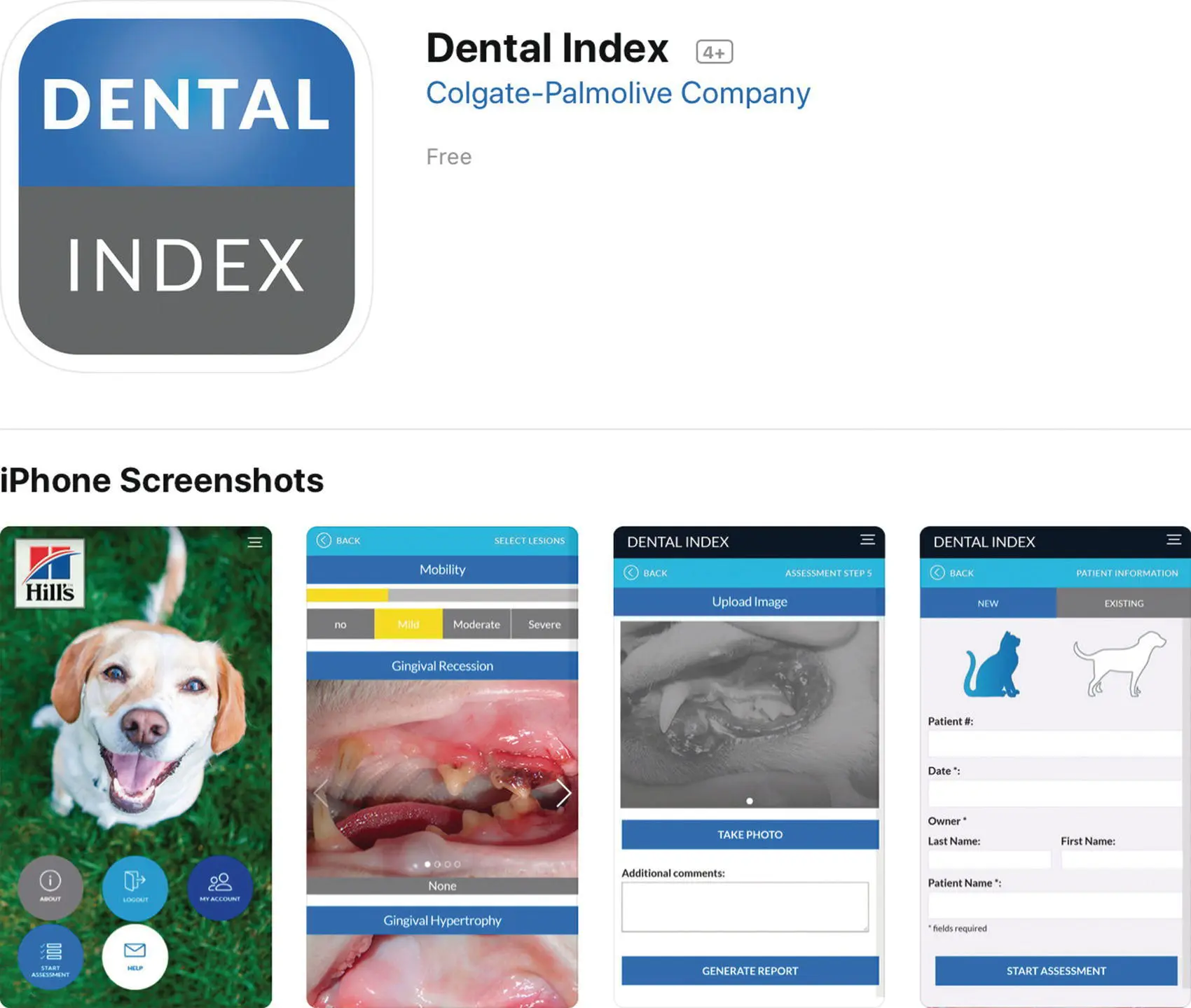
Читать дальше
